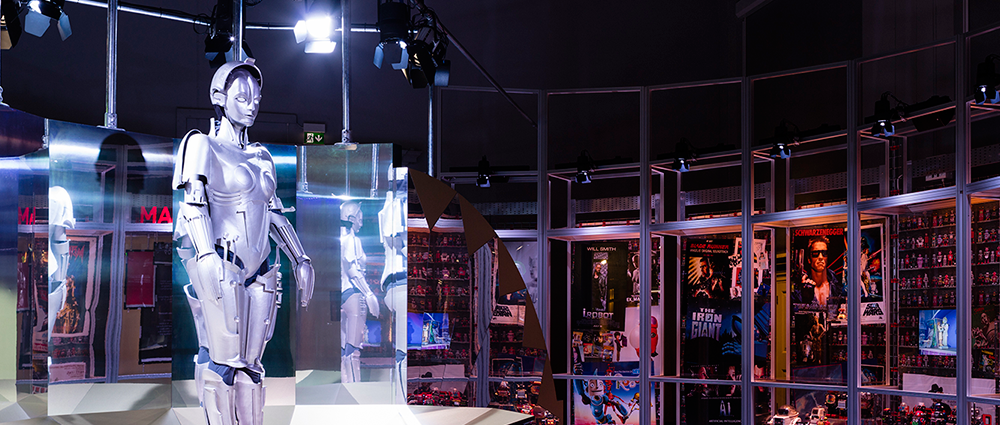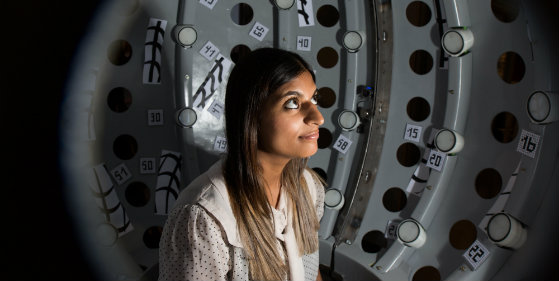Imperial College London and the Royal Free Hospital are asking for 6,000 volunteers to have their faces 3D scanned as part of a new study. The purpose of the research is to create a diverse database of faces with different expressions, ethnicities and age groups. The resulting database will be used in medicine and also for broader applications such as facial recognition technology.
Willing volunteers can take part in the study by visiting London’s Science Museum. The central London museum is collaborating with researchers to assist with data collection.

A roadmap for facial reconstruction
In an article for Imperial College, Dr. Allan Ponniah, plastic surgeon and co-lead at the Royal Free Hospital, explains the purpose of the project as “to develop bespoke 3D face models that act as a roadmap for facial reconstruction procedures.” Dr. Ponniah adds,
The applications could be life changing. For instance, if we want to generate the face of a five-year-old Chinese girl, our computer program will create a model that looks realistic and gives us dimensions we can use to rebuild a face. That would be really useful for a child with a specific facial deformity. You could input data and generate a face with the closest resemblance to the patient, within the normal range.
Although Dr. Ponniah says this technology is still a few years away from active use in surgery, 3D scanning is already used for surgical reconstruction. For example, where facial operations are concerned. Data gathered from this new study could also potentially be used to 3D print models of a patient’s face to help prepare them for a procedure.
Plotting “landmarks” of the face
Dr. Stefanos Zafeiriou and his research group at Imperial College will process the 3D scan data collected by the Science Museum. Dr Zafeiriou says,
It is a real privilege to be working with Dr Ponniah on this project, which has the potential to revolutionise facial reconstruction procedures. The beauty of our approach is that we can map hundreds of landmarks on the face and also features such as bone structure and muscles under the skin to create much more realistic faces.

As previously reported by 3D Printing Industry, a high fidelity approach to digital reconstruction of faces demonstrates the potential to bring figures such as Robert the Bruce and Mohammad Ali back to life.
Taking the technology to another level, Dr. Zafeiriou explains that “in some instances that patients can bring in old video recordings of themselves and we can morph this information into a 3D face model so that it more closely resembles what they would’ve looked like at their age before needing reconstructive surgery.”
Dr. Zafeiriou adds that another potential application of the technology would be for enhanced facial recognition technology, as that used to identify people at airports.
I look completely different from my driving license photo and this can cause problems when I am being identified, say at a shop or even at an airport. Using our approach, a camera could scan my passport or license and my face and project this data onto a 3D model, which could morph my features into a younger and older me to corroborate that it is me.
3D scanning in perspective
It seems that the 3D scanning approach taken by Imperial and the Royal Free Hospital primarily uses photographs to create models of the volunteer’s face. In this method, computer generated depth and shadow analysis is applied to the photograph to create a map of a person’s face.
For more accurate dimensionality, a device like Factum Arte’s Veronica Scanner or a laser powered 3D scanner, as used to recreate the head of Footballer Ian Wright may be required.

The continued improvement of 3D scanning technology has led to its widespread application in manufacturing, computer intelligence and research. Most notably, 3D scanning is used as the “eyes” of autonomous vehicles; it is employed as an inspection tool for metal components; and it is the core technology in cultural heritage projects such as Jonathan Beck’s Scan the World.
Stay up-to-date with the latest 3D scanning and printing news by subscribing to our newsletter and following us on twitter and Facebook.
Featured image: Photograph and accompanying 3D model of a man’s face. Image via Imperial College London



